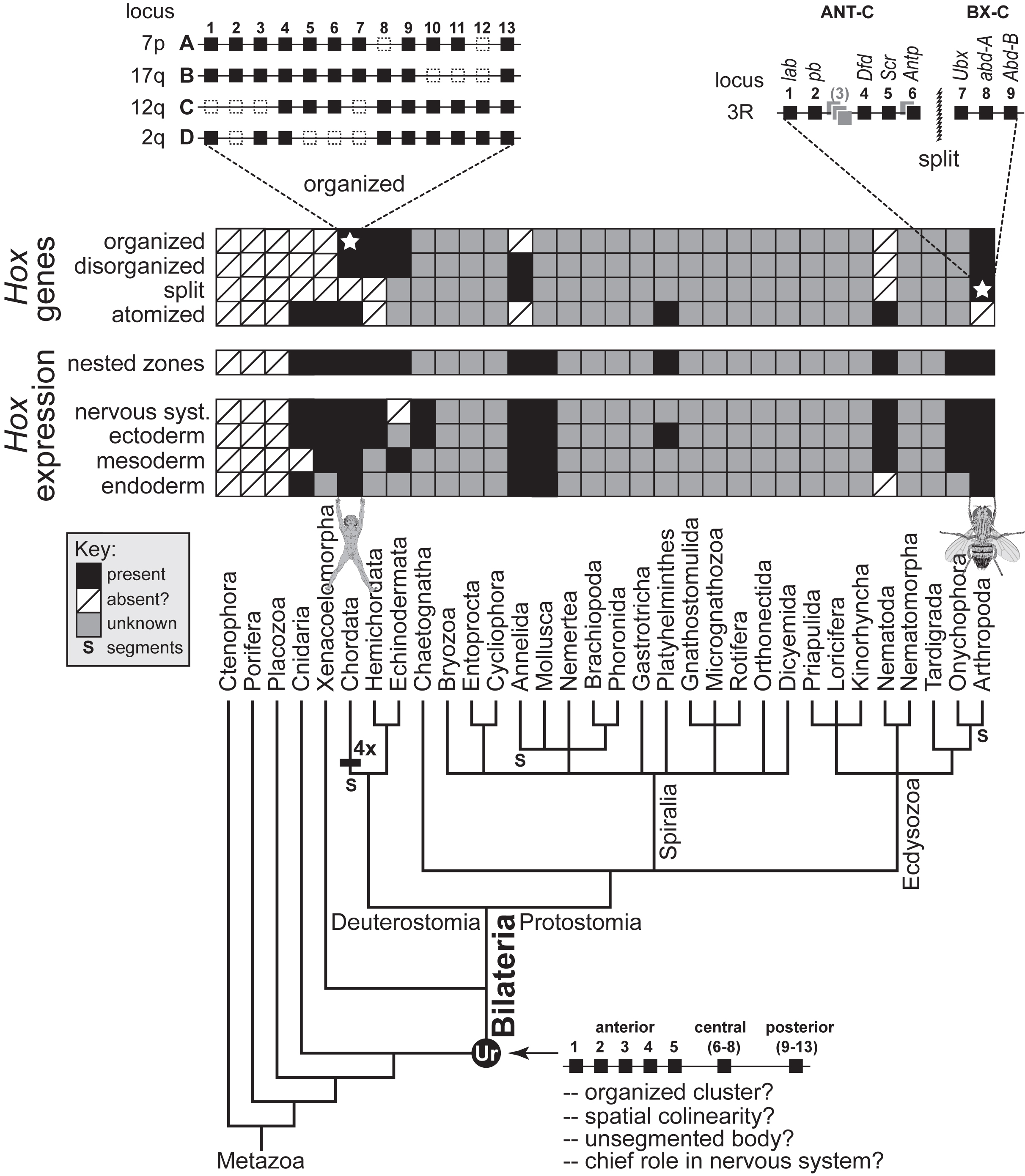

Deep Homology?
  |
Deep Homology? |
 Organization and expression of Hox genes among animal phyla. In the panels marked "Hox genes" the black squares indicate presence of the trait in at least some members of the phylum, slash marks denote absence in all species examined thus far, and gray squares signify insufficient data (see key). The same applies to panels subsumed under "Hox expression," but some of those categories are not mutually exclusive. For example, expression in the nervous system is coupled with expression in the ectoderm, though the reverse is not true. "Nested zones" denotes overlaping expression domains; "organized" means the cluster is compact with uniform polarity; "disorganized" signifies that genes are widely spaced or scrambled with no uniform polarity; and "atomized" means unlinked. The structure of the ancestral Ur-Hox complex (below right) is based on minimum estimates, with "6-8" and "9-13" marking as-yet unduplicated genes. Based on the tissues where Hox expression is most common (lowest panel with four rows of squares) Hox genes may have originally acted in the nervous system. Urbilaterians were probably unsegmented since segments only exist in a few phyla. Only three phyla are classically deemed to be segmented (S). |
|
Introduction: cover image Body axes: figure 2 | figure 3 | figure 4 | figure 5 | figure 6 Nervous system: figure 7 | figure 8 Vision: figure 9 | figure 10 | figure 11 | figure 12 | figure 13 Touch and hearing: figure 14 | figure 15 Smell and taste: figure 16 Limbs: figure 17 Epilogue: figure 18 The Interactive Fly resides on the web server of the Society for Developmental Biology. |